Question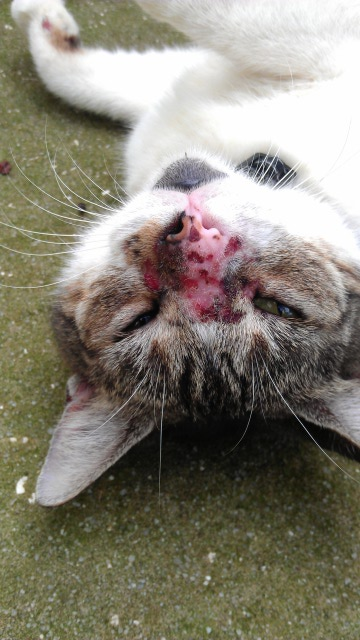 Cat
Cat
QUESTION: There is a stray cat in our neighborhood that has a developed a skin condition on her nose.I've took her to the vet twice but one said it was the mosquitos and the other one that she had an infection. We have given her antibiotics and antiallergenics but none of the two seems to help. I believe this is a fungus she got from being outside. She has this condition since mid May of this year.
I'm attaching a picture to see if you agree with me on the fungus.
Thank you!
ANSWER: Hi Sara,
I hate to give you yet ANOTHER differing opinion, but to me it looks like one of two things: mites or an auto immune disease.
Mites, also called scabies or mange, are often found on the face and will cause lesions like the ones you are seeing. They are common in outdoor cats. There is no specifically approved treatment for cats, but Revolution is the go-to treatment for most vets. While it is not labeled to treat mange, it appears that mites are susceptible to this drug. It is a spot-on treatment used against fleas, available only through your vet. There has also been some success with Frontline. Rather than applying these treatments once a month as suggested for fleas, they should be applied two weeks apart for mange, for a total of three treatments. A skin scraping will show the presence of mites under a microscope. Because this can be uncomfortable, it's more often suggested to treat for mites and see if the symptoms go away.
There are several auto immune diseases that could be responsible. Discoid lupus is one that most commonly causes the skin on the nose to be attacked by the immune system. Ears are also a common place for sores to show up, because the disease is photosensitive. Pemphigus and esoinophilic granuloma complex are other ulcer causing auto immune diseases. Treatment is generally a corticosteroid. If your anti-allergen treatment included cortisone or prednisone and the sores did not respond, auto immune disease is probably not the cause.
I don't think a fungus is high on this list of probabilities because these usually cause thickened, flakey skin. But it remains a possibility. A skin and fur culture is best for determining this. Generally, a thin layer of an antifungal cream (an athlete's foot or cream yeast infection cure), used twice daily for six weeks is the best treatment.
Good luck!
Jessica
---------- FOLLOW-UP ----------
QUESTION: Jessica,
Will it hurt the cat if I start using an antifungul cream before I can get her to vet?
AnswerAntifungal cream isn't likely to worsen any situation. However, if you do find that it stings his sores significantly or that irritation seems worsened, you should discontinue use. If it is a fungal infection, you should notice the improvement of lesions and regrowth of fur within just a week's time, but treatment must continue for six weeks despite this, because spores can remain on the skin and fur. If no improvement is noted within one to two weeks, it is certainly not a fungal infection. Hope that helps!


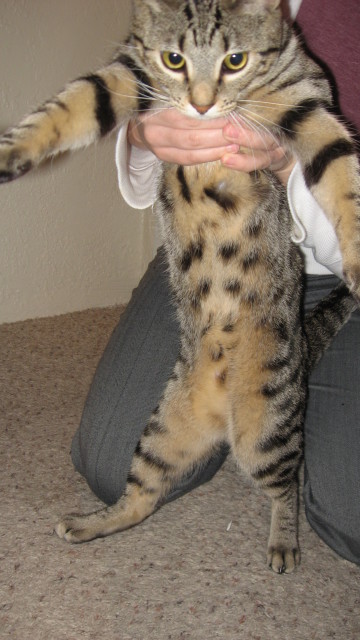 What breed is my cat?
QuestionBoots
QUESTION: Hi Norman, i was hoping
What breed is my cat?
QuestionBoots
QUESTION: Hi Norman, i was hoping
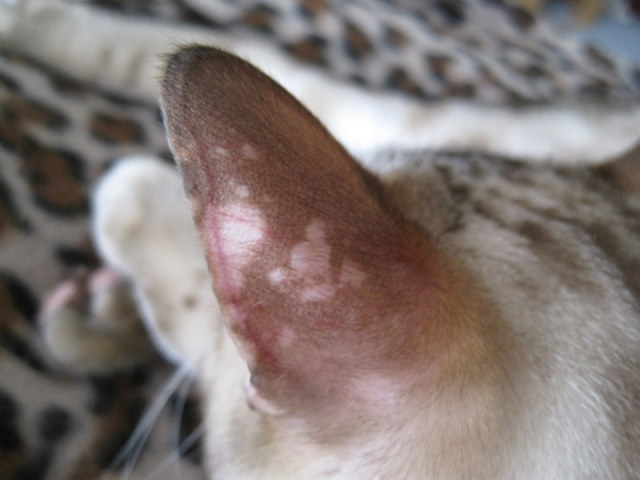 Vitiligo in Pointed Bengal
Question
Possible Vitiligo on B
I have a 1 and a 1/2 ye
Vitiligo in Pointed Bengal
Question
Possible Vitiligo on B
I have a 1 and a 1/2 ye
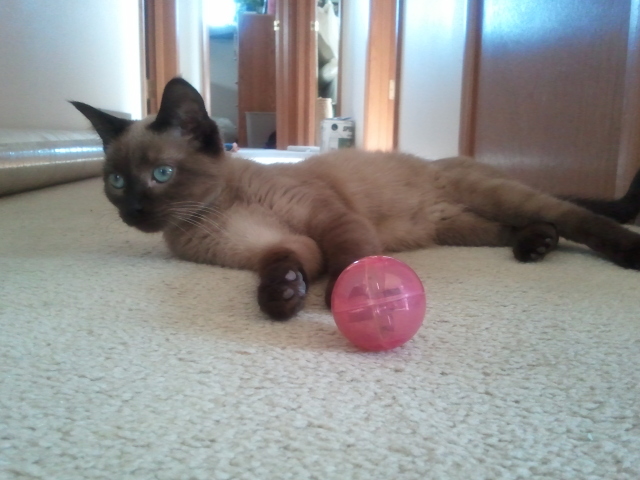 Cinnamon, mysterious Siamese
Question
Cinnamon - mysterious
Hi, I picked you
Cinnamon, mysterious Siamese
Question
Cinnamon - mysterious
Hi, I picked you
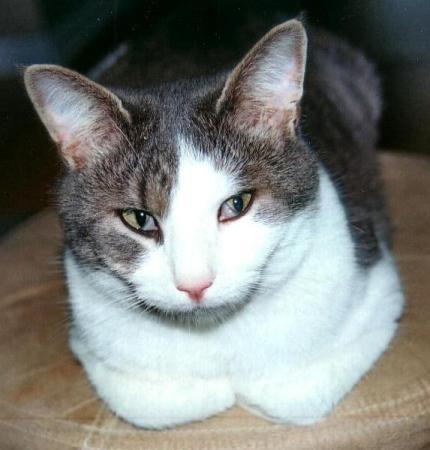 third eyelid, weight gain, irritability
Question
third eyelid pic
I have a 2 year old male cat
third eyelid, weight gain, irritability
Question
third eyelid pic
I have a 2 year old male cat
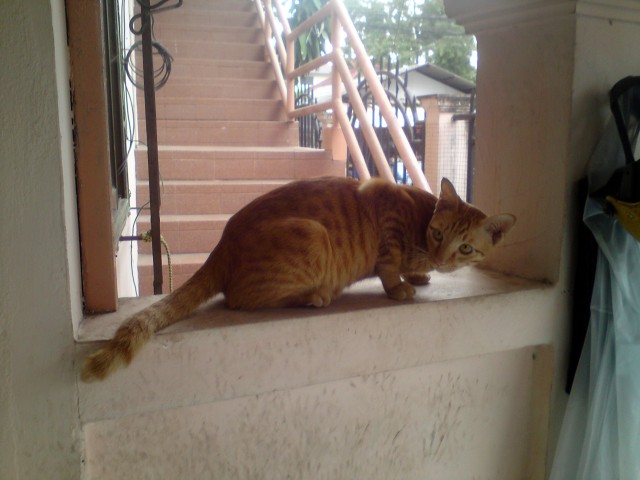 Ocicat
Question
Sesame
My daughter is currently living in Thai
Ocicat
Question
Sesame
My daughter is currently living in Thai